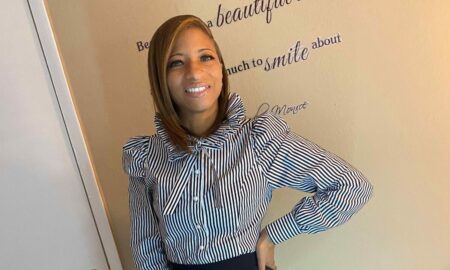

Today we’d like to introduce you to Chris Lee.
Chris, can you briefly walk us through your story – how you started and how you got to where you are today.
My passion for commercializing unique medical technologies began the summer after my freshman year. I had the opportunity to work in a small biomedical research group that engineered cartilage. That experience has since shaped my life. Right after college, I moved to Atlanta to get my Ph.D. in biomedical engineering from Georgia Tech and Emory University.
During my time here, I met more entrepreneurs, engineers, and professors that shared my passion of translating medical research into new therapies.
Eventually, a few of us started Vertera, and 4 years later, we are making innovative spinal implants that have improved the lives of thousands of patients suffering from chronic neck and back pain.
Overall, has it been relatively smooth? If not, what were some of the struggles along the way?
It has definitely been a struggle. The life of an entrepreneur is not for everyone. I did not take a salary from Vertera for the first 3 years and all of us had to work side jobs just to make ends meet.
On top of that, we have worked long nights and weekends to overcome technical and financial challenges at every step including proof of concept, US Food and Drug Administration (FDA) approval, manufacturing scale-up, and market adoption.
That being said, it has been a dream come true with the struggles and sacrifices being completely worth it!
Alright – so let’s talk business. Tell us about Vertera Spine – what should we know?
At Vertera, we developed a high-strength, porous polymer that mimics the mechanics and topography of bone. These unique properties allow orthopedic and spinal implants to directly integrate to the body. Our technology is the first porous polymer to be approved by FDA for a load-bearing application. Previously, the only options these patients had were processed cadaver bone that have a limited supply with the potential for disease transmission, stiff metal implants that can subside into bone and create artifacts on medical imaging, or smooth polymer implants that do not integrate to the body. Additionally, the Centers for Medicare and Medicaid Services (CMS) recently recommended a new ICD-10 code for our technology in order to track improvements in clinical results and cost reduction.
As a company, we are most proud of using lean start-up concepts uncommon in medicine and biotechnology to improve the lives of patients. In 3 years, our team received FDA approval, scaled-up production, and launched our first product nationwide on just $3M raised in public grants and private investments. We recently closed additional angel financing to investigate and develop applications for our artificial bone technology to replace metal implants currently used in other spine, orthopedics, craniofacial, and dental surgeries.
Any shoutouts? Who else deserves credit in this story – who has played a meaningful role?
First and foremost, I would not be here without my parents. They have always provided unconditional financial and emotional support. I also have had many advisors that have been essential for my career including my undergraduate research advisors Professors Lawrence Bonassar, Abraham Stroock, Alex Grodzinsky, my Ph.D. advisors Professors Barbara Boyan and Zvi Schwartz, and co-founder of Vertera Professor Ken Gall.
Finally, starting and growing a medical device company is ultimately a team endeavor, and Vertera would not be the success it is today without the countless efforts of our engineering, operational, sales, marketing, clinical, administrative, and quality staff.
Contact Info:
- Address: 739 Trabert Avenue NW, Suite F
Atlanta, GA 30318 - Website: www.verteraspine.com
- Phone: 571.758.3783
- Email: info@verteraspine.com




Getting in touch: VoyageATL is built on recommendations from the community; it’s how we uncover hidden gems, so if you know someone who deserves recognition please let us know here.



















